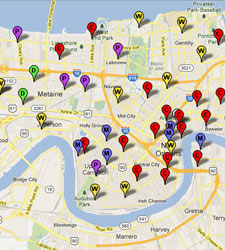This Sunday we hear the story of Jesus healing a man struck with leprosy. Leprosy is a chronic infectious disease caused by the bacillus lepr, and is characterized by the formation of growths in the skin, mucous membranes, peripheral nerves, bones, and internal viscera, producing various deformities and mutilations of the human body, and usually terminating in death. Without treatment, people with leprosy are visibly disfigured and often have significant disability; they have long been feared and shunned by others.
Since leprosy is mentioned so often in the Bible, most of us in developed countries think of it as something from the past. Not so. During 2007, over 250,000 new cases were reported. About 90% of these cases occurred in the following eight countries: India, Brazil, Indonesia, Congo, Bangladesh, Nigeria, Nepal, and Ethiopia. In 2006, 137 new cases were reported in the United States. Cases occurred in 30 states, but over half occurred in six states: California, Florida, Louisiana, Massachusetts, New York, and Texas. Almost all cases of leprosy in the United States involve people who emigrated from developing countries.
While in seminary, I visited a leper colony outside of Calcutta, India run by Mother Teresa’s order, the Missionaries of Charity. Once you got over the physical conditions of the lepers living there, and once you were told that the leprosy was not contagious for healthy people without continuous close contact, you could see the lepers as fellow human beings created in God’s image. But fear in India keeps lepers and non-lepers apart. No one will go near a leper, let alone touch one. Just as in Biblical time, they must live apart from others. It is a fear of a terrible disease and the gruesome effects that it brings. In the Gospel today, Jesus not only goes near the leper, but he stretches out His hand and touches Him.
Although there are very few lepers in the United States, conditions still exist that keep us apart from our neighbors. Examples might be skin color, the amount of money we earn, the amount of education we’ve received, or the social “status” we have. One of the best parts about St. Stephen Church is diversity. Our congregation goes across the spectrum of racial, economic and social lines. We’re a nice slice of New Orleans! But that’s not something to rest on. We still need to drop our fear of the unknown and reach out to those we don’t know. Don’t let anything separate us from each other. Be like Jesus and stretch out your hand and touch someone new today. How will we ever know the inner beauty of each other without looking past the surface!




